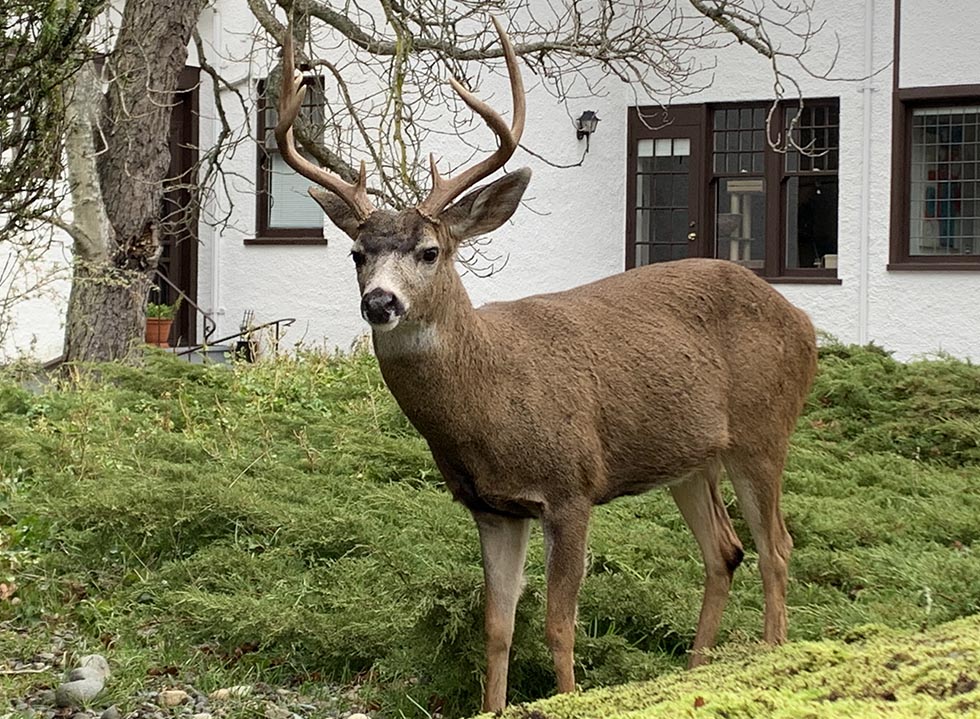As cities grow and the world’s population increases, urban landscapes and biodiversity transform. Many green urban areas have become alternatives for species struggling with habitat loss. As we recently discussed in class, the “Luxury Effect” happens when wealthier neighborhoods have higher biodiversity caused by more green spaces and less human density.
But what does this mean for urban wildlife like the Black-tailed deer? Can green urban areas influence deer behavior, survival, and breeding? That is what the authors of the article “Black-tailed Deer Resource Selection Reveals Some Mechanisms Behind the ‘Luxury Effect’ in Urban Wildlife” investigated in their research.

The study tracked 20 females with GPS collars to monitor their movements and habitat use in an affluent neighborhood in Victoria, British Columbia, Canada. They found that although wealthy green neighborhoods mean a smaller home range, they significantly impact Black-tailed deer by providing resources such as food and safety from predators. These conditions improve their chances of survival and increase breeding success, resulting in growing deer populations. The authors suggest that deer behavior is adaptable to urban landscapes, and they can alter their foraging habits and spatial use to maximize their resources.
While this research gives us important insights into how urban spaces can support some level of biodiversity, the paper could be improved by expanding this research to include surrounding neighborhoods, genetic material, and GPS collars on males. This data would be helpful to better understand metapopulation dynamics, genetic diversity, and effective wildlife management in urban areas.
Although the results were positive in showing Black-tailed deer succeed in an urban environment, it is important to recognize that the luxury effect often thrives on social inequality, meaning that it is not sustainable. Understanding these dynamics is beneficial, as they give us the chance to explore ways to replicate the biodiversity found in wealthier neighborhoods in less affluent places. By addressing social inequalities and promoting wildlife-friendly urban environments, we can use this knowledge to create more inclusive spaces that support diverse ecosystems for all communities.
Source: Fisher, J. T., Fuller, H. W., Hering, A., Frey, S., & Fisher, A. C. (2024). Black-tailed deer resource selection reveals some mechanisms behind the ‘luxury effect’in urban wildlife. Urban Ecosystems, 27(1), 63-74.